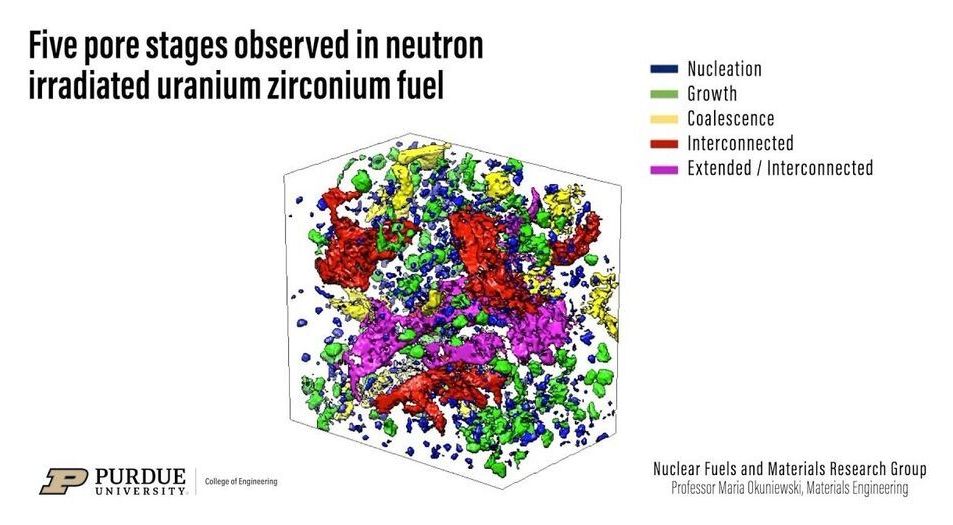Jan 20, 2021
Plant Cells of Different Species Can Swap Organelles
Posted by Genevieve Klien in category: futurism
In grafted plants, shrunken chloroplasts can jump between species by slipping through unexpected gateways in cells walls.
In grafted plants, shrunken chloroplasts can jump between species by slipping through unexpected gateways in cells walls.

VC investor Tim Draper has invested in start-ups developing human jetpack suits and flying motorcycles via VTOL technology enabling human propulsion.
This is the third installment in a three-part series. Read parts one and two.
In the third and final part of our series, Fusion Industry Association director Andrew Holland tells Asia Times’ correspondent Jonathan Tennenbaum how the private sector is leap-frogging government programs in the race to develop commercial fusion power plants.
Andrew Holland: So now the private sector is coming in. You mentioned high-temperature superconductors. That’s an important new thing. There’s a whole range of new developments that come from outside of the fusion space that are now being applied.
Student-led teams aren’t the only ones testing out novel electric propulsion techniques recently. Back in November, a company called Exotrail successfully tested a completely new kind of electric propulsion system in space – a small hall-effect thruster.
Hall effect thrusters themselves have been around for awhile. However, they have been limited in their practicality, primarily because of their size. Normally they are about the size of a refrigerator and require kilowatts of power, making them impractical for any small satellites.
That’s where Exotrail’s novel system shines. It is about the size of a 2 liter bottle of soda (or pop if you’re from that part of the world), and only requires around 50 watts of power. This makes the propulsion system ideal for satellites ranging from 10 to 250 kg.
NHS clinicians in England will be among the first to offer a cutting-edge personalised cancer treatment to some people with lymphoma, after the CAR T cell therapy was approved for NHS use.
Tecartus – a immune-boosting treatment that engineers a patient’s own immune cells to kill their cancer – has been recommended by the National Institute for Health and Care Excellence (NICE) for people with a rare type of non-Hodgkin lymphoma.
NICE estimates that around 100 people a year with mantle cell lymphoma could be treated with this therapy. Kruti Shrotri, head of policy development at Cancer Research UK, said the news will be welcomed by people with mantle cell lymphoma.

In a feat requiring perseverance, world-leading technology, and no small amount of caution, scientists have used intense X-rays to inspect irradiated nuclear fuel. The imaging, led by researchers at Purdue University and conducted at the U.S. Department of Energy’s (DOE) Argonne National Laboratory, revealed a 3D view of the fuel’s interior structure, laying the groundwork for better nuclear fuel designs and models.
Until now, examinations of uranium fuel have been limited to mostly surface microscopy or to various characterization techniques using mock versions that possess little radioactivity. But scientists want to know at a deeper level how the material changes as it undergoes fission inside a nuclear reactor. The resulting insights from this study, which the Journal of Nuclear Materials published in August 2020, can lead to nuclear fuels that function more efficiently and cost less to develop.
Continue reading “Scientists gain an unprecedented view of irradiated nuclear fuel” »
A team of researchers from the Institut national de la recherche scientifique (INRS), Quebec, Canada, have developed an electrolytic process for treating wastewater, degrading microplastics at the source.
Microplastics are fragments of plastic less than 5mm long, often contained in toiletries or shedding from polyester clothing. They are present in virtually every corner of the Earth, and pose a particularly serious threat to marine ecosystems. High concentrations of microplastics can be carried into the environment in wastewater.
There are no established degradation methods to handle microplastics during wastewater treatment; although some techniques exist, these involve physical separation as a means of filtering the pollutant. These techniques do not degrade microplastics, which requires additional work to manage the separated fragments. So far, research into degradation of microplastics has been very limited.
SAN FRANCISCO (AP) — The number of western monarch butterflies wintering along the California coast has plummeted precipitously to a record low, putting the orange-and-black insects closer to extinction, researchers announced Tuesday.
An annual winter count by the Xerces Society recorded fewer than 2000 butterflies, a massive decline from the tens of thousands tallied in recent years and the millions that clustered in trees from Northern California’s Marin County to San Diego County in the south in the 1980s.
Western monarch butterflies head south from the Pacific Northwest to California each winter, returning to the same places and even the same trees, where they cluster to keep warm. The monarchs generally arrive in California at the beginning of November and spread across the country once warmer weather arrives in March.
A brain aging link ~~~.
Suppose Smokey the Bear were to go on a tear and start setting forest fires instead of putting them out. That roughly describes the behavior of certain cells of our immune system that become increasingly irascible as we grow older. Instead of stamping out embers, they stoke the flames of chronic inflammation.
Biologists have long theorized that reducing this inflammation could slow the aging process and delay the onset of age-associated conditions, such as heart disease, Alzheimer’s disease, cancer and frailty, and perhaps even forestall the gradual loss of mental acuity that happens to nearly everyone.
Continue reading “Study reveals immune driver of brain aging” »
